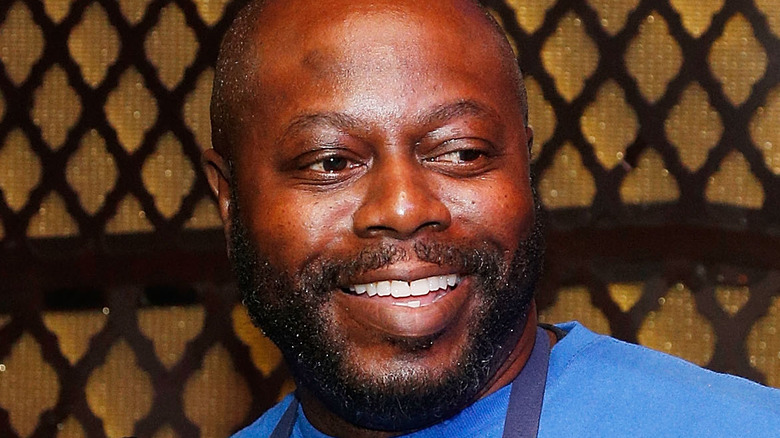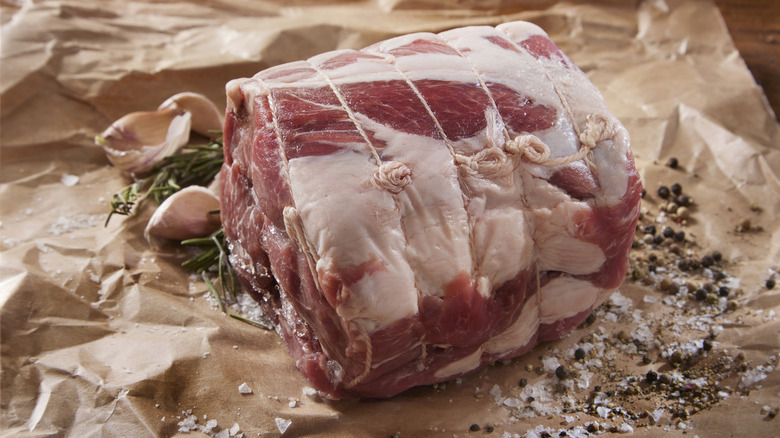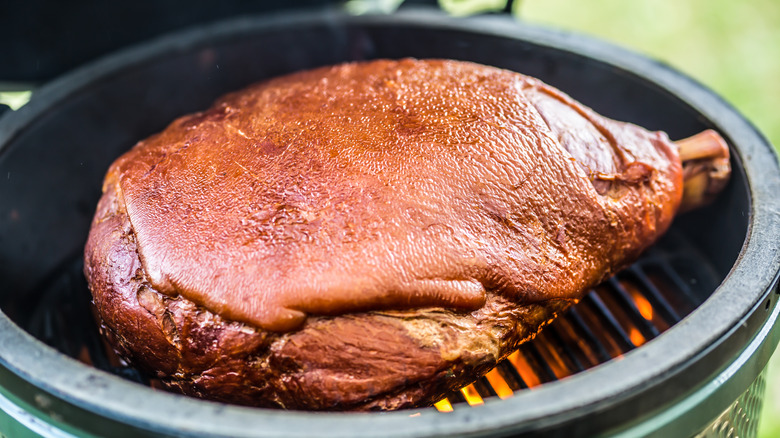The Best Cuts Of Meat For Home Smoking, According To Rodney Scott
The road to being an adept at-home pitmaster can be both fun and frustrating. There are the dizzying highs of your first successful smoke, the hours of research and soul-searching spent deciding what kind of equipment will work best for you, and the depths of despair when a piece of meat you've spent hours lovingly attending to fails to live up to your vision. That's to say nothing of being wracked with indecision regarding what you're going to cook. Rodney Scott, legendary pitmaster of Rodney Scott's Whole Hog BBQ, knows your pain, and he's here to help, at least regarding that last item: what to throw on the smoker, pit, or grill.
"I would recommend, for the home smoker, a shoulder or a ham," Scott told Tasting Table in an exclusive interview. "These are not very hard to cook at home. If you maintain your temperature, you can balance your time with the slow cook going on and preparing for your tailgate, and you don't end up with a lot of leftover food. These are pretty good size cuts of meat for smoking that you can pull from and serve quite a few people."
Essentially — especially if you're just beginning your barbecue journey — don't start at the top of the pyramid. Sure, smoked brisket is a thing of beauty, but it's also easy to foul up royally. So err on the side of forgiveness, and never lose sight of the crew you're likely looking to feed.
Rodney Scott's tips for smoking pork shoulder
Rodney Scott's first pick for a tasty home smoke, pork shoulder — aka Boston butt — is one of the most popular cuts for barbecue and other tasty dishes that call for succulent shredded pork (looking at you, carnitas). As the name suggests, it is the upper portion of either of the hog's front legs. These well-worked muscles are marbled with gobs of flavorful fat and intertwined with connective tissue that, when treated correctly — i.e., cooked low and slow — melts and keeps the meat moist while giving it a wonderful unctuous mouthfeel. But Scott also recommends choosing meat where the fat cap isn't too thick, "because when that fat is rendering while you're cooking, you stand the risk of flare-ups," he told us.
Given all the delicious properties inherent to a pork shoulder, not much prep is really needed to get it grill-ready. Sure, you could brine it, but with so much moisture and fat, what's the point? A simple rub — or even just salt and pepper — that is allowed to rest on the uncovered meat overnight will suffice. Smoke it at a low temperature south of 300 degrees away from the heat source over a shallow pan of water for several hours until the internal temperature hits about 165 degrees, and you'll soon be pulling off shreds of porky goodness that will make your friends and family squeal with delight.
Best practices when barbecuing ham
Ham, on the other hand, is from the back leg of the hog, and you're likely more familiar with the cured version of it, which is also occasionally smoked, dried, or both. Country ham from the American South, jamón ibérico from Spain, and prosciutto from Italy are just a few of the many ham preparation options. Some are dry-cured in salt and spices, while others are wet-cured in a brine — but ham doesn't have to be cured at all.
Sharing many of the same properties as a pork shoulder, uncured, fresh ham performs just as well on a smoker or pit where it is given time to become meltingly tender. It's important to bear in mind that ham, as a cut, is considerably larger than a pork shoulder; it's also harder to come by fresh ham. Both of these facts should point you in the direction of a good butcher, who can both help you procure a ham and cut it down in size if need be. From there, you can salt it, rub it, brine it, or otherwise season it as you see fit. The smoking process — indirect, with plenty of moisture — will be much the same as with the shoulder, just adjusted for weight.
If you want to place the right foot forward on the pitmaster path, heed Rodney Scott's advice and get the grill going for these great pieces of meat.


